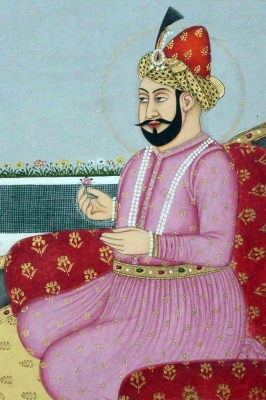
Nasir-ud-Din Muhammad, popularly known as Humayun, was the second emperor of the Mughal Empire. He succeeded his father Babur to the throne in 1530. Between 1530 and 1540, and 1555-1556, Humayun ruled over what is now Afghanistan, Pakistan, Northern India and Bangladesh.
He lost his kingdom in 1540, and regained it in 1555 with the help of the Safavid dynasty of Persia. This also marked the beginning of the influence of Persian art, architecture, literature and language on the Mughals.
Humayun passed away in January 1556, when he fell down the stairs of hid library and hit his temple on rugged stone edge. He was laid to rest initially at the Purana Qila, also in Delhi, but his Kalanaur in Punjab following in the attack and capture of the Purana Qila by the Hindu emperor Hemu. Humayun was finally buried in a grand way at his tomb, following its completion.
Picture Credit : Google

